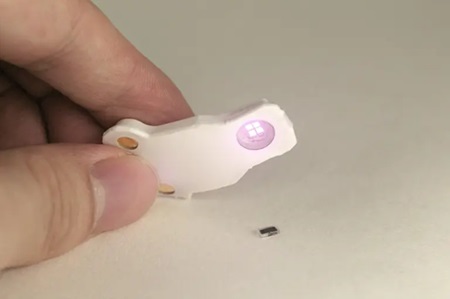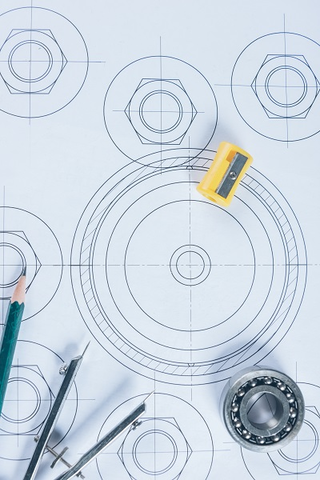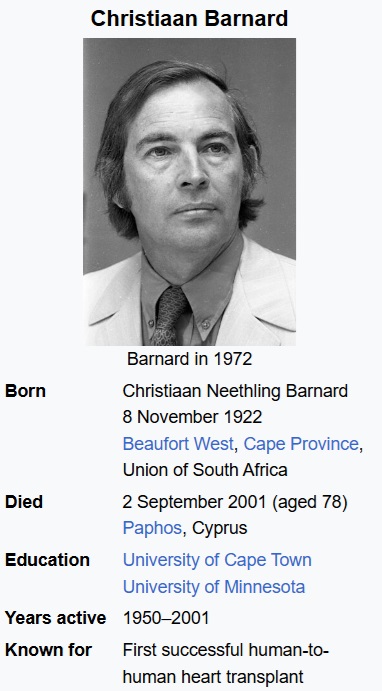
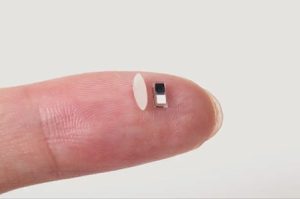
Northwestern University engineers have developed a pacemaker so tiny that it can fit inside the tip of a syringe—and be noninvasively injected into the body.
Although it can work with hearts of all sizes, the pacemaker is particularly well-suited to the tiny, fragile hearts of newborn babies with congenital heart defects.
Designed for patients who only need temporary pacing, the pacemaker simply dissolves after it’s no longer needed. All the pacemaker’s components are biocompatible, so they naturally dissolve into the body’s biofluids, bypassing the need for surgical extraction.
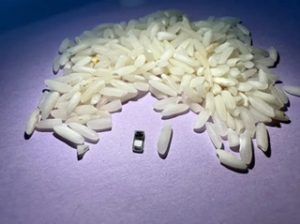
The study was published in the journal Nature. The paper demonstrates the device’s efficacy across a series of large and small animal models as well as human hearts from deceased organ donors.
“There’s a crucial need for temporary pacemakers in the context of pediatric heart surgeries, and that’s a use case where size miniaturization is incredibly important. In terms of the device load on the body—the smaller, the better.”
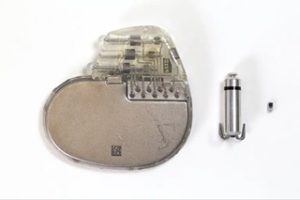
“About 1% of children are born with congenital heart defects—regardless of whether they live in a low-resource or high-resource country. The good news is that these children only need temporary pacing after a surgery. In about seven days or so, most patients’ hearts will self-repair. But those seven days are absolutely critical.
“Now, we can place this tiny pacemaker on a child’s heart and stimulate it with a soft, gentle, wearable device. And no additional surgery is necessary to remove it.”
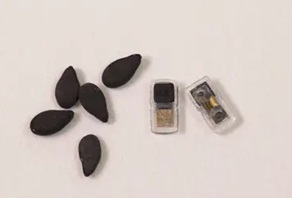
Meeting an unmet clinical need
This work builds on a previous collaboration between Rogers and Efimov, in which they developed the first dissolvable device for temporary pacing. Many patients require temporary pacemakers after heart surgery—either while waiting for a permanent pacemaker or to help restore a normal heart rate during recovery.
When the temporary pacemaker is no longer needed, physicians remove the pacemaker electrodes. Potential complications include infection, dislodgement, torn or damaged tissues, bleeding and blood clots.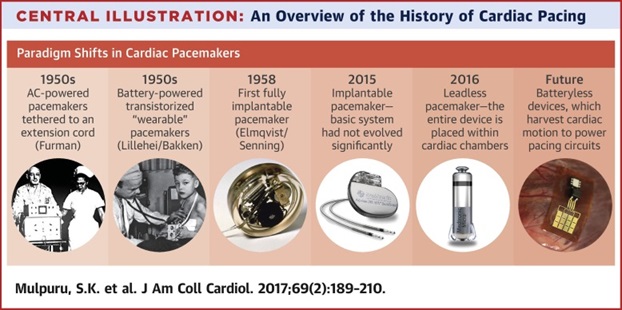
“Wires literally protrude from the body, attached to a pacemaker outside the body,” Efimov said.
“When the pacemaker is no longer needed, a physician pulls it out. The wires can become enveloped in scar tissue. So, when the wires are pulled out, that can potentially damage the heart muscle. That’s actually how Neil Armstrong died. He had a temporary pacemaker after bypass surgery. When the wires were removed, he experienced internal bleeding.”
The thin, flexible, lightweight device eliminated the need for bulky batteries and rigid hardware, including wires. Rogers’ lab had previously invented the concept of bioresorbable electronic medicine—electronics that provide a therapeutic benefit to the patient and then harmlessly dissolve in the body like absorbable sutures.
By varying the composition and thickness of the materials in these devices, Rogers’ team can control the precise number of days they remain functional before dissolving.
Body fluid-powered battery
While the original quarter-size dissolvable pacemaker worked well in pre-clinical animal studies, cardiac surgeons asked if it was possible to make the device smaller.
Then it would be better suited to noninvasive implantation and for use in the smallest patients. But the device was powered by near-field communication protocols—the same technology used in smartphones for electronic payments and in RFID tags—which required a built-in antenna.
“Our original pacemaker worked well,” Rogers said.
“It was thin, flexible and fully resorbable. But the size of its receiver antenna limited our ability to miniaturize it. Instead of using the radio frequency scheme for wireless control, we developed a light-based scheme for turning the pacemaker on and delivering stimulation pulses to the surface of the heart. This is one feature that allowed us to dramatically reduce the size.”
To help further reduce the device’s size, the researchers also reimagined its power source. Instead of using near-field communication to supply power, the new, tiny pacemaker operates through the action of a galvanic cell, a type of simple battery that transforms chemical energy into electrical energy. Specifically, the pacemaker uses two different metals as electrodes to deliver electrical pulses to the heart. When in contact with surrounding biofluids, the electrodes form a battery. The resulting chemical reactions cause the electrical current to flow to stimulate the heart.
“When the pacemaker is implanted into the body, the surrounding biofluids act as the conducting electrolyte that electrically joins those two metal pads to form the battery,” Rogers said. “A very tiny light-activated switch on the opposite side from the battery allows us to turn the device from its ‘off’ state to an ‘on’ state upon delivery of light that passes through the patient’s body from the skin-mounted patch.”
Pulsing with light
The team used an infrared wavelength of light that penetrates deeply and safely into the body. If the patient’s heart rate drops below a certain rate, the wearable device detects the event and automatically activates a light-emitting diode. The light then flashes on and off at a rate that corresponds to the normal heart rate.
“Infrared light penetrates very well through the body,” Efimov said. “If you put a flashlight against your palm, you will see the light glow through the other side of your hand. It turns out that our bodies are great conductors of light.”
Even though the pacemaker is so tiny—measuring just 1.8 millimeters in width, 3.5 millimeters in length and 1 millimeter in thickness—it still delivers as much stimulation as a full-sized pacemaker.
“The heart requires a tiny amount of electrical stimulation,” Rogers said. “By minimizing the size, we dramatically simplify the implantation procedures, we reduce trauma and risk to the patient, and, with the dissolvable nature of the device, we eliminate any need for secondary surgical extraction procedures.”
More sophisticated synchronization
Because the devices are so tiny, physicians could distribute collections of them across the heart. A different color of light could illuminate to independently control a specific pacemaker. Use of multiple pacemakers in this manner enables more sophisticated synchronization compared to traditional pacing. In special cases, different areas of the heart can be paced at different rhythms, for example, to terminate arrhythmias.
“We can deploy a number of such small pacemakers onto the outside of the heart and control each one,” Efimov said. “Then we can achieve improved synchronized functional care. We also could incorporate our pacemakers into other medical devices like heart valve replacements, which can cause heart block.”
“Because it’s so small, this pacemaker can be integrated with almost any kind of implantable device,” Rogers said.
“We also demonstrated integration of collections of these devices across the frameworks that serve as transcatheter aortic valve replacements. Here, the tiny pacemakers can be activated as necessary to address complications that can occur during a patient’s recovery process. So that’s just one example of how we can enhance traditional implants by providing more functional stimulation.”
The technology’s versatility opens a broad range of other possibilities for use in bioelectronic medicines, including helping nerves and bones heal, treating wounds and blocking pain.
More information: Millimetre-scale bioresorbable optoelectronic systems for electrotherapy, Nature (2025). DOI: 10.1038/s41586-025-08726-4
Provided by Northwestern University
Main Page Image Note: When the wearable device (left) detects an irregular heartbeat, it emits light to activate the pacemaker. These short pulses— which penetrate through the patient’s skin, breastbone and muscles — control the pacing. Credit: John A. Rogers/Northwestern University

